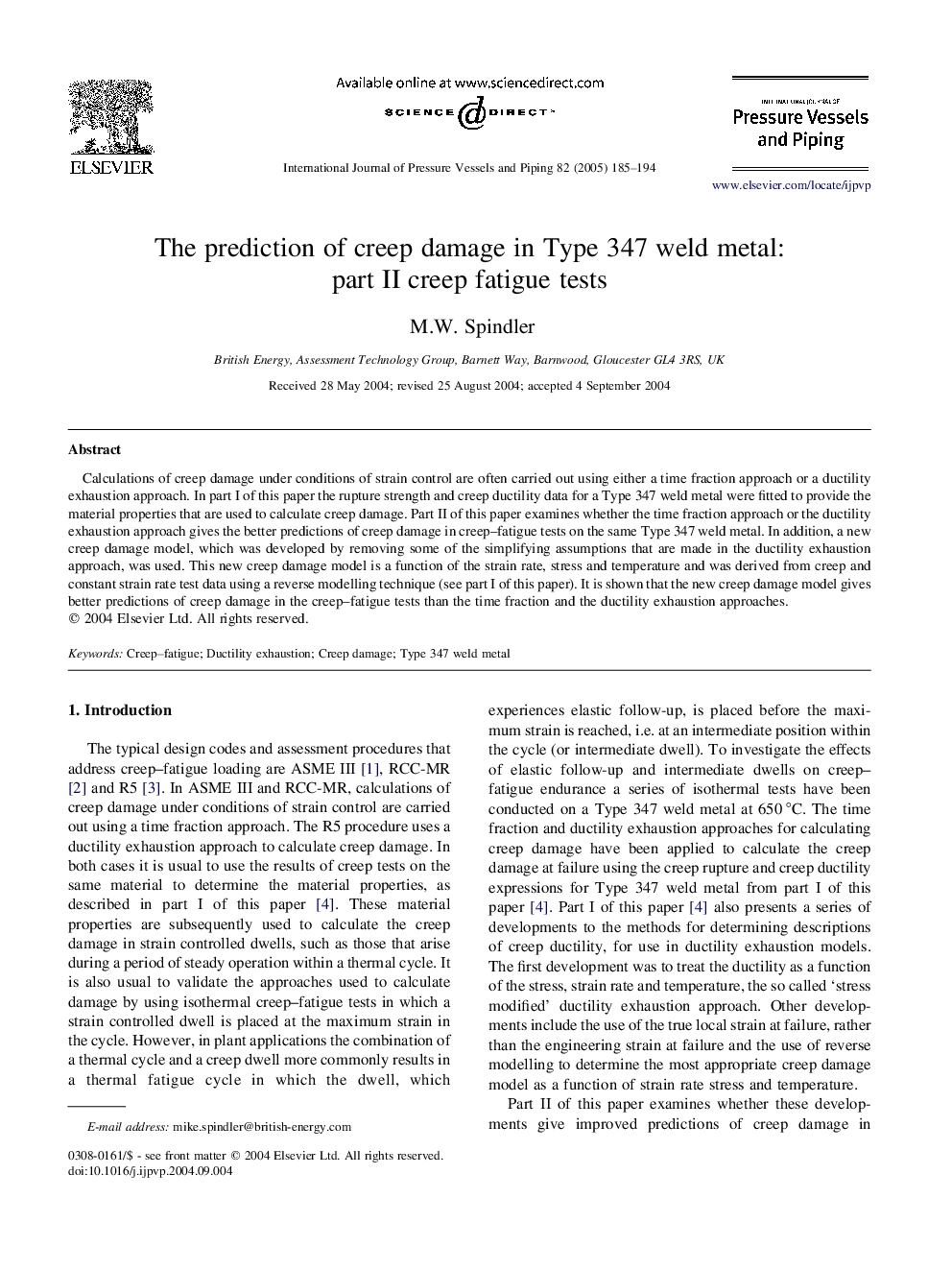| Article ID | Journal | Published Year | Pages | File Type |
|---|---|---|---|---|
| 9707655 | International Journal of Pressure Vessels and Piping | 2005 | 10 Pages |
Abstract
Calculations of creep damage under conditions of strain control are often carried out using either a time fraction approach or a ductility exhaustion approach. In part I of this paper the rupture strength and creep ductility data for a Type 347 weld metal were fitted to provide the material properties that are used to calculate creep damage. Part II of this paper examines whether the time fraction approach or the ductility exhaustion approach gives the better predictions of creep damage in creep-fatigue tests on the same Type 347 weld metal. In addition, a new creep damage model, which was developed by removing some of the simplifying assumptions that are made in the ductility exhaustion approach, was used. This new creep damage model is a function of the strain rate, stress and temperature and was derived from creep and constant strain rate test data using a reverse modelling technique (see part I of this paper). It is shown that the new creep damage model gives better predictions of creep damage in the creep-fatigue tests than the time fraction and the ductility exhaustion approaches.
Related Topics
Physical Sciences and Engineering
Engineering
Mechanical Engineering
Authors
M.W. Spindler,
